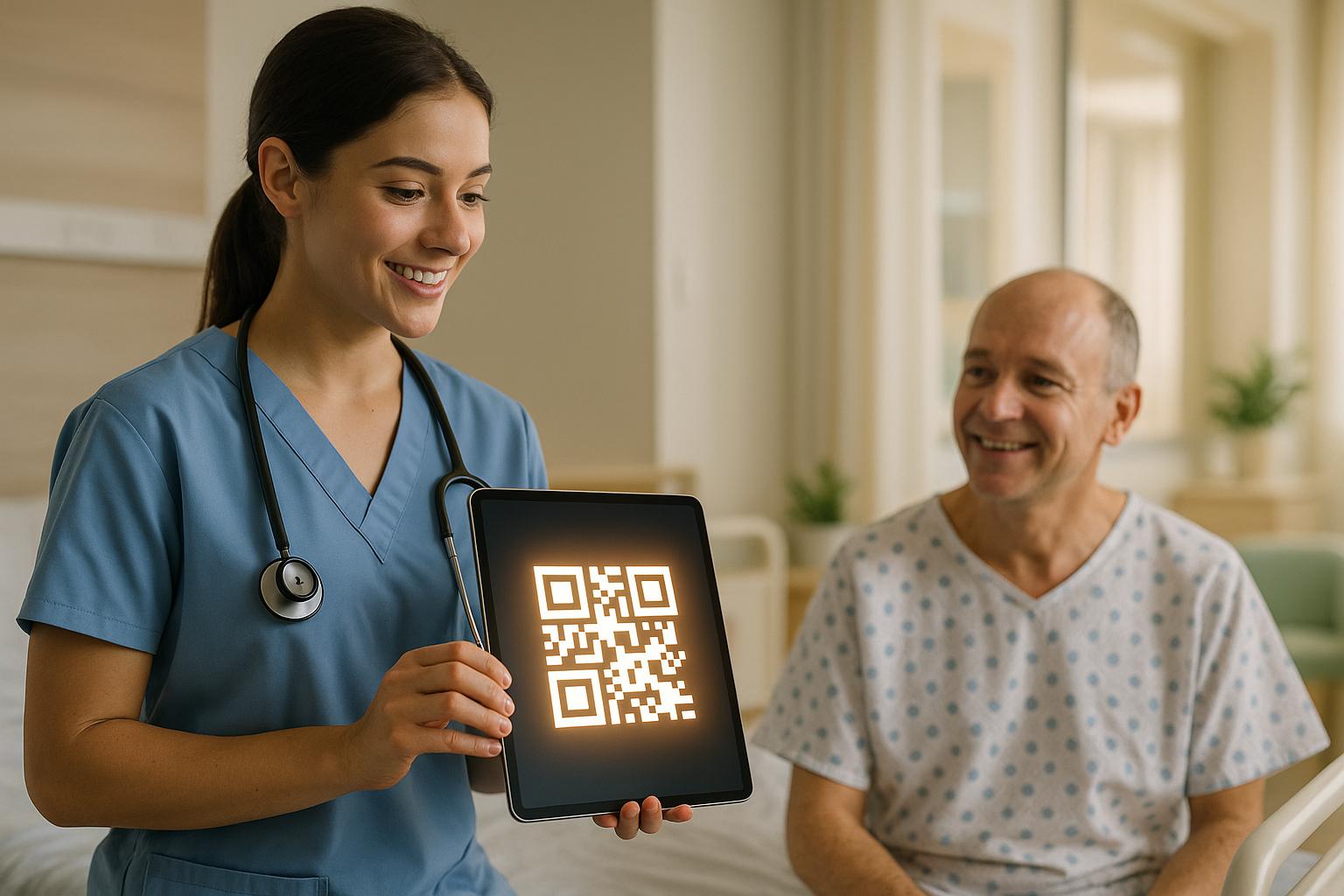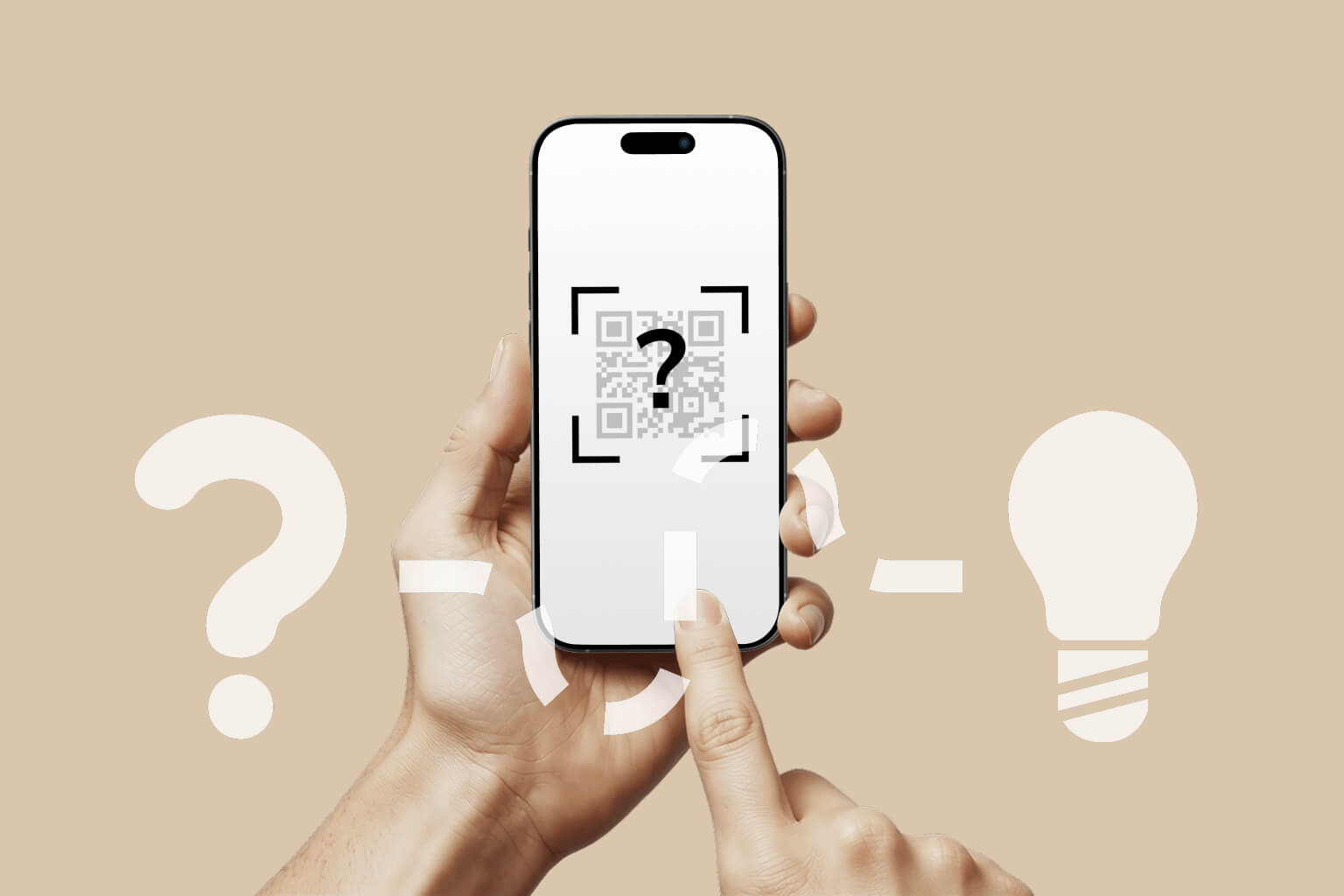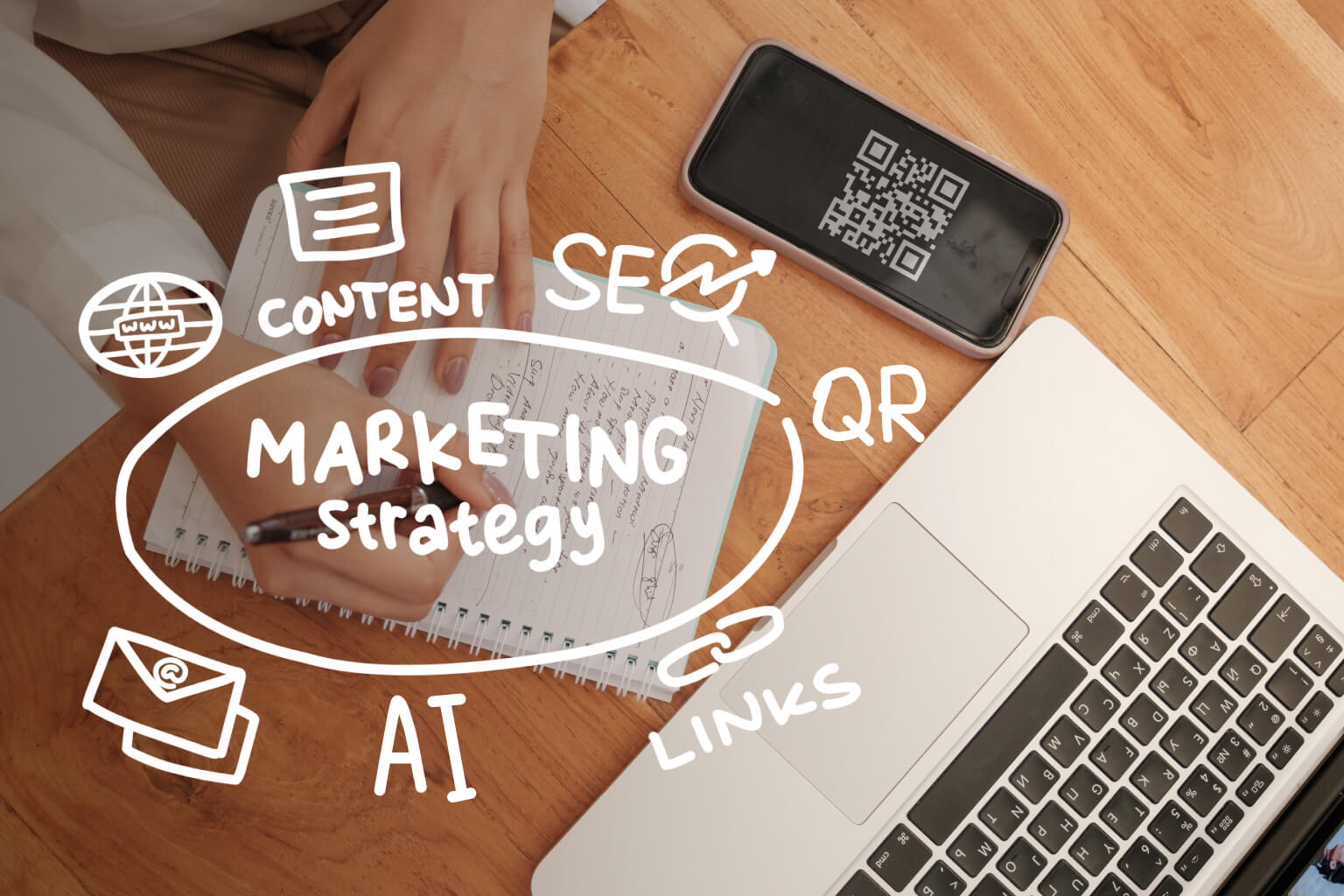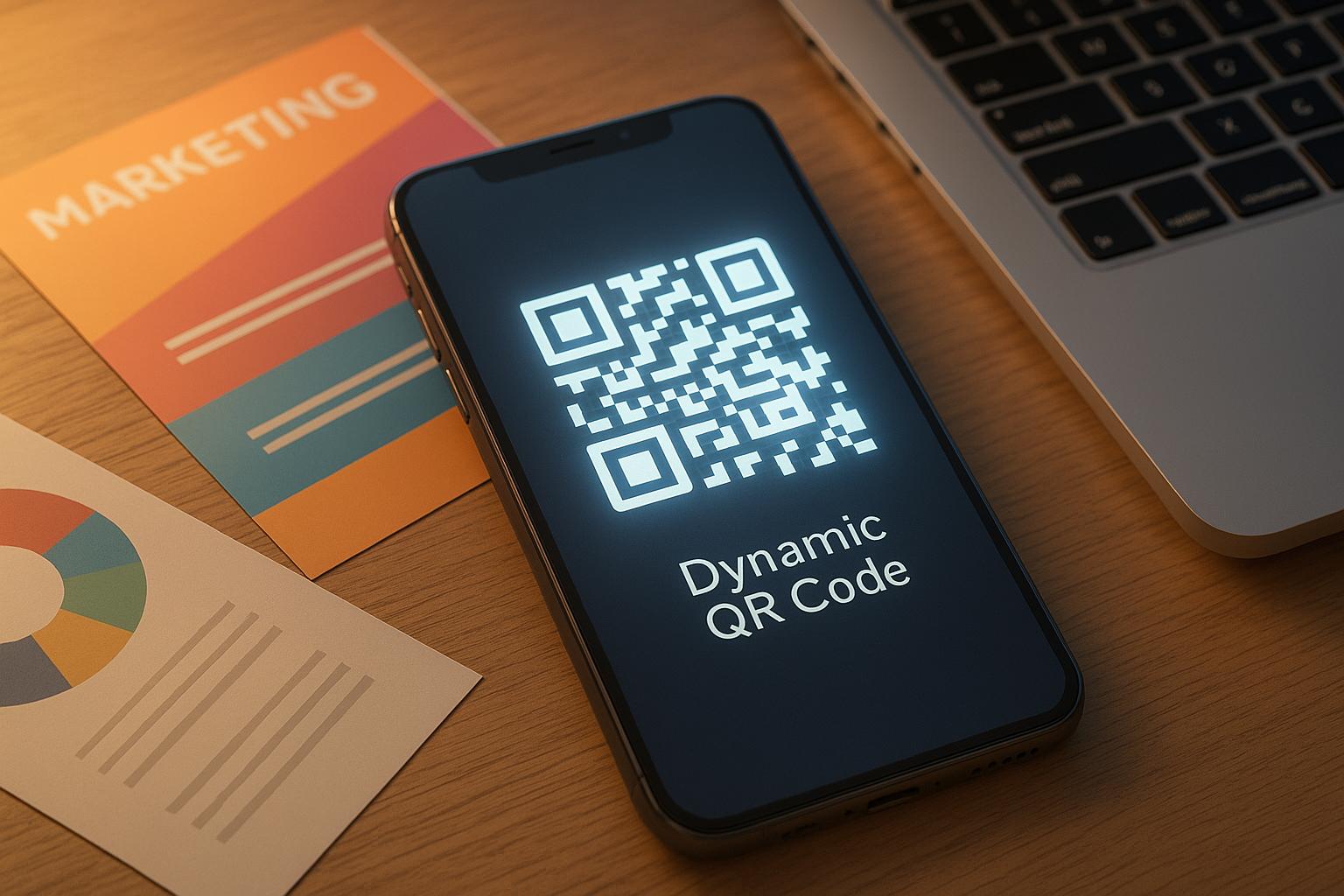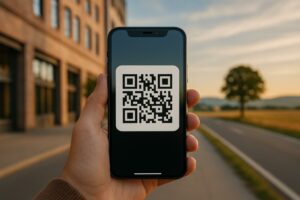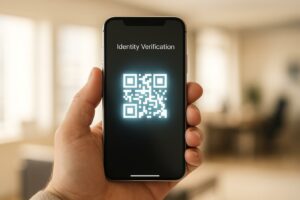QR codes are transforming healthcare by improving efficiency, patient safety, and communication. From faster check-ins to better medication management, these small codes are making a big impact. Here’s a quick overview of their key benefits:
- Faster Patient Check-Ins: Reduce wait times by 30% with contactless registration.
- Improved Medication Management: Help patients follow prescriptions accurately and avoid errors.
- Access to Medical Records: Enable instant, secure retrieval of patient information.
- Reduced Paperwork: Digitize workflows to minimize administrative errors.
- Enhanced Clinical Trials: Simplify participant tracking and data collection.
Static QR Codes are best for unchanging information like contact details, while Dynamic QR Codes allow updates, tracking, and secure access to sensitive data. Both play unique roles in modernizing healthcare processes.
Key Takeaway: QR codes are a simple yet powerful tool to streamline healthcare, improve patient care, and enhance safety – all while maintaining data security.
5 BIG Benefits of QR codes in Healthcare
Key benefits of QR codes in healthcare
QR codes are making waves in healthcare by tackling persistent challenges in patient care, operational efficiency, and safety. These scannable squares are proving to be a simple yet effective tool for improving various healthcare processes.
Faster hospital check-ins and registrations
Traditional hospital check-ins can be slow, leading to crowded waiting areas. QR codes offer a contactless way to register, letting patients manage their check-in process using their smartphones. By scanning a QR code placed in parking lots or building entrances, patients can fill out intake forms and provide necessary details right from their phones. This not only cuts down on physical contact but also speeds up the entire process, reducing exposure risks.
For healthcare staff, this system means quicker access to patient data and real-time monitoring of check-ins. For example, one hospital saw wait times drop by over 30% after integrating QR code check-ins into their queue management. Similarly, during COVID-19 vaccination drives, United Medical Center (UMC) in Eagle Pass, Texas, used QR codes to streamline the process. Patients confirmed their arrival and completed forms from their cars, allowing the center to vaccinate 800–1,000 people daily while maintaining social distancing.
To implement this, healthcare facilities can create QR codes linked to registration forms and place them strategically – at entrances, parking areas, or near kiosks.
Better medication management and adherence
Medication errors and poor adherence remain significant hurdles in healthcare. QR codes on medication packaging provide patients with instant access to important information. By scanning these codes, patients can view detailed instructions, watch helpful videos, and access personalized materials that reinforce proper medication use. These codes can even offer interactive reminders and dosage schedules to keep patients on track.
QR codes also provide guidance in multiple languages, making them especially useful for patients with limited English proficiency. For instance, the University of Vermont Medical Center Specialty Pharmacy used QR codes to deliver audio instructions to a patient managing eight medications. Over three months, the patient scanned the code 73 times and avoided any hospital readmissions. This is especially important considering that 52% of adverse events in patients with limited English skills stem from communication issues.
Providers can further enhance medication management by using PDF QR codes for detailed instruction sheets or video QR codes to demonstrate medication techniques.
Easier access to patient records and medical information
Quick and secure access to patient records is crucial for timely care. QR codes bridge the gap between physical identification and electronic medical records (EMR). When added to wristbands or ID cards, QR codes allow instant access to a patient’s medical history, allergies, medications, and treatment plans. This eliminates the need for time-consuming manual searches. In emergencies, first responders can scan these codes to retrieve vital information, enabling faster and more accurate care.
Less paperwork and fewer administrative errors
Doctors often spend a significant amount of time on EMR-related tasks, leaving less time for direct patient care. QR codes help ease this burden by digitizing workflows and minimizing manual data entry. A study by Reynolds and colleagues found that an electronic evaluation system using QR codes improved efficiency, with residents submitting an average of 23 electronic evaluations over six months compared to 14 paper assessments in an earlier period.
Tools like Google Form QR codes for patient surveys or email QR codes for inter-department communication can further simplify administrative tasks, reducing errors and streamlining processes. This approach is also beneficial in clinical research, where precision is critical.
Better clinical trial management
Clinical trials require seamless data tracking and communication. QR codes simplify these tasks by creating direct digital connections between participants and research teams. For recruitment, QR codes on flyers or posters can link potential participants directly to screening forms. During trials, participants can scan QR codes to access symptom trackers, medication logs, or educational materials, enabling real-time data collection and easing the workload for research staff.
Healthcare organizations can also use app QR codes to direct participants to custom research apps or link QR codes for secure participant portals. This flexibility ensures accurate data collection while maintaining participant privacy and adapting to specific study needs.
Practical applications of QR codes in healthcare

Healthcare facilities are leveraging QR codes to enhance patient care and make operations more efficient across various areas.
Patient check-ins and scheduling
QR codes have transformed the check-in process, making it faster and contactless. For example, a hospital in New York City replaced its traditional registration method with QR codes, allowing patients to check in, update their details, and notify departments upon arrival. This change reduced check-in times by almost 40%. Similarly, during COVID-19 vaccination drives, United Medical Center (UMC) in Eagle Pass, Texas, used QR codes in parking lots. Patients could complete intake forms from their vehicles, maintaining social distancing.
Healthcare facilities can adopt this system by linking QR codes to registration forms and placing them in key areas like entrances, parking lots, or waiting rooms. This method also allows for easy updates to forms without the need to reprint codes.
Beyond registration, QR codes are reshaping medication handling to improve patient safety.
Medication packaging and prescription management
Adding QR codes to medication packaging helps ensure patient safety by providing instant access to critical information. In January 2025, DosePacker began including QR codes on their compliance packs, integrating them with their MyDoses App and CareCommunityOS Electronic Health Record system. These codes, printed on individual dose cups, help verify that patients take the correct medication at the right time.
In Germany, several pharmacy chains have adopted similar practices, placing QR codes on medicine packaging. Scanning these codes provides patients with details about dosages, potential side effects, and automated reminders to stay on schedule.
This technology addresses a serious issue: the National Institutes of Health reports that about 50% of patients fail to take their medications as prescribed, leading to over 125,000 deaths annually. Pharmacies can further assist patients by using QR codes to provide basic instructions or even video tutorials on proper medication use.
Patient education and aftercare
QR codes are bridging the gap between clinical visits and home care by offering patients round-the-clock access to post-treatment information. For instance, a hospital in Tokyo improved post-surgical care by providing QR codes linking to detailed recovery guidelines. These included instructions for wound care, pain management, recognizing complications, and videos demonstrating physical therapy exercises. This approach not only boosted patient confidence but also reduced post-surgical complications.
With 85% of Americans owning a smartphone, QR codes have become an accessible and convenient tool for patient education. Providers can use QR codes to link to detailed PDF instruction sheets, educational YouTube videos, or even Google Forms to gather patient feedback or track symptoms. This ensures patients stay informed and engaged in their care long after leaving the clinic.
Best Practices for Implementing QR Codes in Healthcare

Implementing QR codes in healthcare requires thoughtful planning to ensure data security, accessibility, and ease of use, all while adhering to regulatory standards.
Protecting Data Security and Patient Privacy
In 2023, data breaches impacted nearly 133 million people, with patient records being sold for over $1,000 each. Protecting sensitive information linked to QR codes is essential.
- Use secure QR code platforms that offer features like single sign-on, multifactor authentication, custom domains, and robust user management. Platforms with alert systems and regular security audits can help maintain high protection standards.
- Ensure HIPAA compliance at all times. As Sharat Potharaju, Co-founder and CEO of Uniqode, explains:
"As healthcare organizations continue to explore innovative technologies to enhance patient experiences and streamline operations, HIPAA compliance is an absolute necessity. By ensuring our QR code platform meets these rigorous standards, our clients can leverage the benefits of our technology while maintaining the highest levels of data security and patient privacy."
- Apply encryption and strict access controls to every QR code interaction. Let patients know their data is encrypted during transmission, which not only complies with privacy regulations but also builds trust.
These security measures lay the groundwork for creating QR codes that are not only safe but also accessible.
Designing Accessible and Easy-to-Scan Codes
With 72% of healthcare organizations already using or planning to use QR codes, designing codes that are accessible for everyone is a must.
- Offer multiple access options beyond QR codes. Include alternatives like written URLs, email links, or phone numbers to ensure that patients who can’t scan QR codes can still access the information.
- Design QR codes with high contrast and appropriate sizing. Codes should be at least 2 cm x 2 cm to ensure they are scannable even in poor lighting or by users with visual impairments.
- Provide clear instructions alongside QR codes. Explain how to scan and what information patients can expect to find. As VocalEyes, a UK-based advocacy group, noted:
"QR codes were useful – when accompanied by clear instructions."
- Test compatibility with assistive technologies like screen readers. UNESCO’s QR code implementation at Golconda Fort, which included sign language interpreters and video presentations for hard-of-hearing visitors, is an excellent example of inclusive design.
Accessible design ensures that QR codes can serve a diverse range of users effectively.
Integrating with Electronic Medical Records (EMRs)
Linking QR codes to EMR systems can streamline workflows and enhance care quality, but this requires careful planning and attention to security.
- Set up secure database connections with encryption, strict access controls, and reliable backup systems. Generate unique QR codes for patients that link directly to their EMR data, ensuring only authorized personnel can access sensitive information.
- Use dynamic QR codes to allow real-time updates to patient information without needing to replace physical codes. This ensures records remain accurate and up to date.
- Implement strong cybersecurity protocols to prevent unauthorized access. Regular monitoring and audits can help identify vulnerabilities early.
SPRY Therapeutics Inc. offers a great example of EMR integration. Their SPRY EMR solution, launched in May 2025, allows therapists to scan QR codes to instantly access patient histories, enabling faster and more informed treatment decisions.
Staff Training and Patient Education
Even the most secure and well-designed QR codes won’t succeed without proper training and education.
- Train staff thoroughly on approved QR code platforms, security measures, and troubleshooting. Staff should know how to assist patients with scanning and handle any technical issues.
- Provide multilingual resources to accommodate diverse patient populations. Visual guides and simple diagrams can further break down language barriers, making QR codes accessible to everyone.
Educating both staff and patients ensures smooth adoption and use of QR codes.
Regularly Updating Linked Digital Content
Keeping the information linked to QR codes accurate and current is critical for patient safety and care quality.
- Set update schedules for different types of content. Medical information and treatment protocols may require frequent updates, whereas general facility details might change less often. Dynamic QR codes simplify this process by enabling updates without replacing physical codes.
- Monitor performance using analytics to identify underused or problematic QR codes. Regular testing across multiple devices ensures consistent functionality.
- Assign responsibility for updates to specific team members. Clear accountability helps prevent outdated information from staying linked to QR codes, which could compromise care.
Mike Bruemmer, VP of Experian Data Breach Resolution and Consumer Protection, warns:
"QR codes are the new stealth threat vector. Regardless of their application, no one can tell a fake code that launches malware on your device from a legitimate one."
sbb-itb-74874c9
Case Studies and Success Stories
The use of QR codes in healthcare is delivering tangible results across various countries and settings. These examples highlight how QR code solutions are reshaping patient experiences and streamlining operations.
Faster Check-Ins in New York City Hospitals
A hospital in New York City replaced its traditional check-in process with QR code scanning, reducing check-in times by an impressive 40%. Patients now scan a QR code on their smartphones to check in, update personal details, and alert the appropriate department of their arrival. This efficient system not only speeds up the process but also allows staff to focus on more critical tasks, like addressing complex patient needs, instead of being bogged down with paperwork.
Medication Management in German Pharmacies
Germany’s healthcare system has fully embraced electronic prescriptions, with over 135 million e-prescriptions filled since the national rollout began. Currently, nearly 85,000 medical institutions issue these prescriptions, covering 88% of the population with public health insurance.
One German pharmacy chain took this a step further by placing QR codes directly on medication packaging. When patients scan these codes, they gain access to essential details such as dosage instructions, potential side effects, and reminders for taking their medication. This initiative has driven e-prescription pickup rates to an impressive 94%, compared to the previous 75%–80% average for traditional paper prescriptions.
Secure Access to Patient Records in UK Clinics
In the UK, a private clinic has implemented QR codes to provide secure access to patient records. After consultations, patients receive a QR code linking them to a secure platform where they can view test results, treatment plans, and medical scans. The clinic ensures data security through multi-factor authentication and encryption, keeping sensitive information protected while remaining accessible to authorized users.
Healthcare professionals in the UK have also highlighted the broader advantages of QR codes. As Gardiner et al. noted:
"QR codes have a significant role to play in disseminating information to both patients and colleagues. They are free to create, allow frequent updates, never ‘run out’ and save on the cost and environmental consequences of printing updated leaflets."
Enhancing Clinical Trial Management
QR codes are also transforming clinical research. Research institutions now use dynamic QR codes to share real-time updates, consent forms, and screening questionnaires with potential participants. This eliminates the need for reprinting materials or sending new links, making the process more efficient.
These codes are particularly useful in longitudinal studies, where participants regularly submit health data or complete surveys. Instead of dealing with complicated login systems, participants simply scan a QR code to access the latest data collection form, streamlining the entire process.
These examples showcase how Pageloot’s QR code solutions are making a difference in healthcare – from cutting wait times to improving medication adherence and securing patient data. Across diverse settings, this technology is proving to be a game-changer.
Comparison table: static vs dynamic QR codes for healthcare
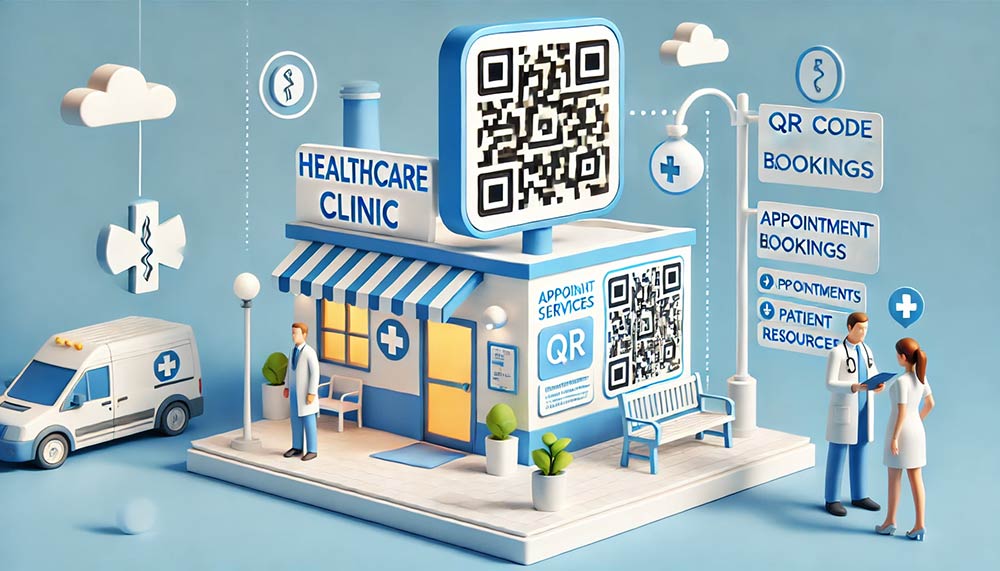
Building on the practical applications discussed, this breakdown highlights which type of QR code fits specific healthcare scenarios. Knowing when to use each can help streamline processes and manage costs effectively.
When to use static QR codes
Static QR codes are ideal for information that doesn’t need to change. In healthcare, these codes are perfect for things like basic contact details, Wi-Fi access, or permanent links to your hospital’s main website. Once created, the data in static QR codes is fixed, so there’s no need for ongoing updates or adjustments.
For instance, static QR codes are a great fit for patient bathroom signs linking to hygiene instructions, emergency contact numbers displayed in waiting areas, or business cards for healthcare professionals. These use cases don’t require tracking, updates, or customization – they just need to function reliably whenever scanned.
With Pageloot’s static QR codes, healthcare organizations can create them for free, and they never expire. This makes them a cost-effective option for facilities operating with limited budgets or handling straightforward information-sharing needs.
When to use dynamic QR codes
Dynamic QR codes, on the other hand, offer flexibility by using short URLs that can be updated without reprinting. This makes them invaluable in healthcare settings where information changes frequently.
For example, dynamic QR codes are well-suited for patient education materials that need regular updates, evolving medication details, or appointment scheduling systems. During the pandemic, Boston Children’s Hospital used dynamic QR codes for telehealth visits, allowing them to modify Zoom links and meeting protocols without replacing physical signage.
Dynamic QR codes also provide detailed analytics. Healthcare providers can track scan counts, peak usage times, and device types, enabling them to refine patient engagement strategies. With 79% of businesses using dynamic QR codes to create personalized interactions, hospitals can tailor content based on user behavior and preferences.
Additionally, dynamic QR codes come with advanced security options like password protection and expiration dates. This is particularly useful for sensitive healthcare needs, such as sharing patient information that should expire after a consultation or requiring authentication to access medical records.
The table below outlines the differences between static and dynamic QR codes for quick reference.
Comparison table
| Feature | Static QR Codes | Dynamic QR Codes |
|---|---|---|
| Editability | Cannot be edited once created | Editable after printing |
| Tracking & analytics | No tracking capabilities | Detailed scan tracking and analytics |
| URL structure | Long, complicated URL | Concise URL |
| Scanning speed | Slower scanning | Faster scanning |
| Security features | Basic | Password protection, expiration dates |
| Cost | Free to create | May require subscription |
| Best healthcare uses | Wi-Fi access, emergency contacts, permanent links | Patient education, appointment scheduling, updated medication info |
| Retargeting capability | Not available | Can retarget users online |
| Content updates | Requires reprinting | Update content without reprinting |
| Customization | Limited design options | Greater branding and design flexibility |
For applications where the information stays static – like your hospital’s main phone number – static QR codes are a reliable, cost-free choice. However, for patient-focused uses that demand updates, tracking, or personalization, dynamic QR codes bring the adaptability modern healthcare requires.
"With the flexibility to change QR Code destination or content, even after their creation, dynamic QR Codes give businesses an upper hand over static QR Codes." – Uniqode
Conclusion
QR codes are reshaping healthcare by simplifying processes, reducing paperwork, and improving safety. As healthcare organizations continue to adopt this technology, they’re finding new ways to enhance patient experiences and streamline operations.
The advantages are clear. Facilities can speed up check-ins, minimize medication errors, and provide instant access to educational resources. These practical improvements not only boost efficiency but also ensure that high standards of care are maintained.
However, security is a critical factor. With health data breaches impacting nearly 133 million people in 2023, it’s vital to implement QR code solutions that prioritize encryption and comply with HIPAA regulations. Protecting patient data must remain a top priority alongside delivering the convenience that QR codes offer.
Key Takeaways
QR codes bring measurable improvements to healthcare workflows. They eliminate paper-based tasks, reduce administrative errors, and enhance safety with better medication management and fast access to critical information. They also improve patient engagement by offering easy access to educational materials and simplifying check-in procedures.
When choosing between static and dynamic QR codes, it’s important to assess your needs. Static codes are ideal for permanent information, like emergency contacts or Wi-Fi details, while dynamic codes are better suited for content that requires regular updates or usage analytics. With the right planning – focused on data security, staff training, and patient education – these tools can deliver significant value to healthcare providers.
Explore Pageloot‘s QR Code Solutions

Pageloot offers a secure and efficient way to integrate QR codes into your healthcare operations. Whether you’re looking for PDF QR codes to share educational materials, Google Form QR codes for intake forms, or dynamic QR codes for content updates, Pageloot has the tools you need.
Healthcare providers can take advantage of a free 14-day trial to explore premium features like scan tracking and real-time analytics – no credit card required.
If you’re ready to modernize your processes, check out our specialized healthcare QR code solutions and see how QR codes can elevate patient care while maintaining top-tier security.
FAQs
How do QR codes improve patient safety and medication management in healthcare?
QR codes are making a big impact on patient safety and medication management by offering quick and accurate access to vital information. When placed on medication packaging, these codes allow both patients and healthcare providers to instantly access details like usage instructions, dosage recommendations, and safety warnings. This helps ensure medications are taken properly, minimizing mistakes and encouraging better adherence to treatment plans.
On top of that, QR codes simplify prescription workflows by automating data entry, which cuts down on human errors during the dispensing process. They also provide real-time updates on medication information, keeping both patients and providers informed with the latest details. This technology is paving the way for clearer communication, safer practices, and healthier outcomes.
What’s the difference between static and dynamic QR codes, and how should they be used in healthcare?
Static QR codes are unchangeable once created, making them ideal for fixed information like permanent URLs, contact details, or printed materials. They’re easy to produce and budget-friendly but don’t offer the ability to track or update content.
Dynamic QR codes, however, bring flexibility to the table. They allow you to update the linked content without reprinting the code and include tracking and analytics. This makes them especially useful in healthcare for tasks like updating patient records, managing appointment schedules, or running promotional campaigns.
In healthcare, static QR codes work best for permanent, unchanging information, while dynamic QR codes are better suited for situations that require updates or real-time adjustments.
How can healthcare facilities protect patient data and ensure privacy when using QR codes?
To keep patient data safe and maintain privacy, healthcare facilities should follow a few important steps when implementing QR codes.
First, ensure full compliance with HIPAA regulations to protect patient health information (PHI). This means using secure QR code systems that encrypt data and limit access strictly to authorized personnel.
Second, choose QR code generators equipped with advanced security features like multifactor authentication to block unauthorized access. Regular audits and monitoring of QR code usage can also help spot any vulnerabilities and maintain accountability.
By adopting these practices, healthcare providers can safeguard sensitive information and strengthen patient confidence in their systems.

